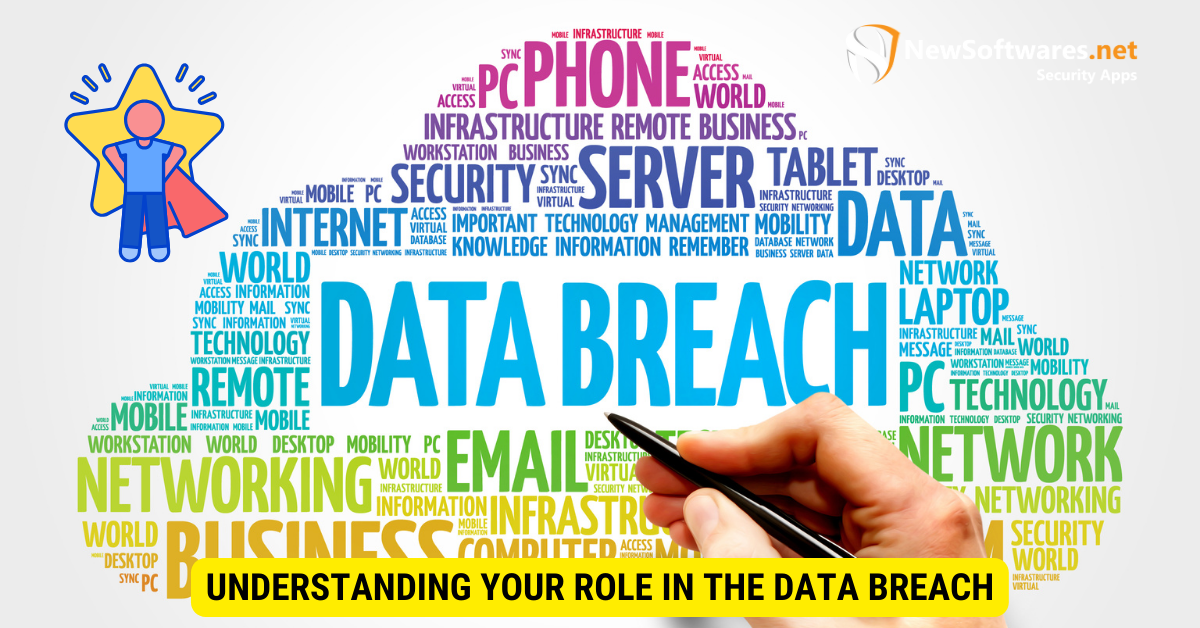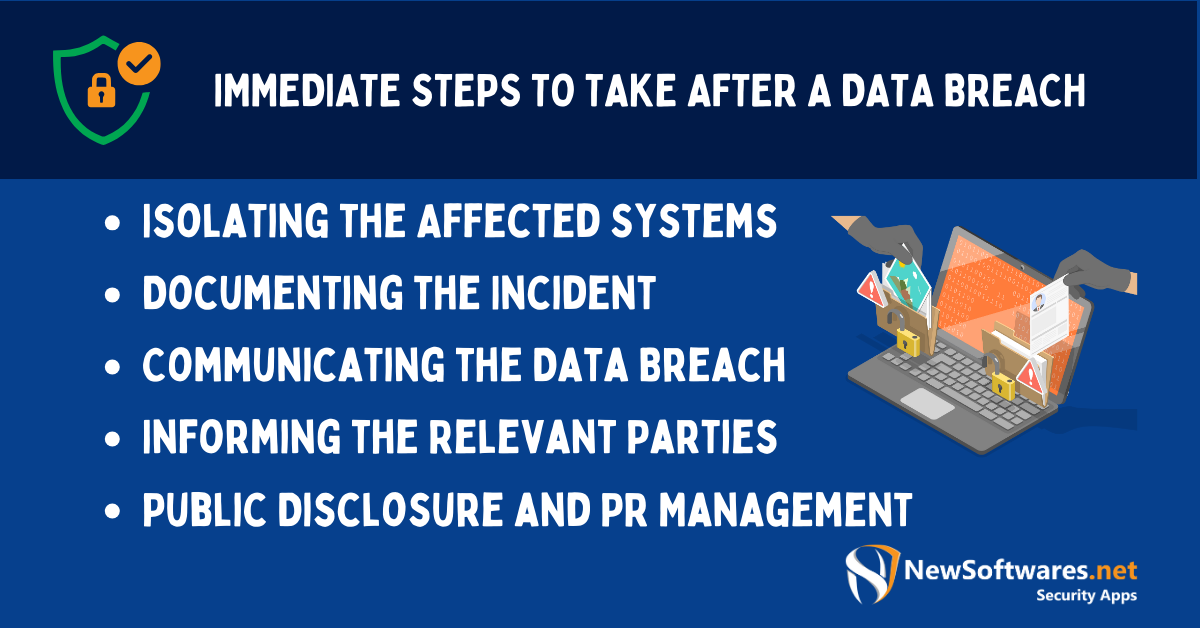If you are at fault for a data security breach, you should promptly acknowledge the mistake, inform affected parties, rectify the breach, and implement stronger security measures.
Data breaches have become an unfortunate but common occurrence in today’s digital age. These breaches can happen due to various reasons, including human error. If you find yourself responsible for a data breach, it is essential to understand your role and take appropriate action to rectify the situation. I will guide you through the necessary steps to handle a data breach when you are at fault.
Understanding Your Role in the Data Breach

When a data breach occurs, it is crucial first to understand your role in the incident. Identifying your mistake is the initial step towards resolution. Mistakes can range from clicking on suspicious links to accidentally sharing sensitive information with the wrong recipients.
Understanding the intricacies of your role in a data breach is essential to address the issue at hand effectively. It requires a careful examination of your actions leading up to the breach, as well as a comprehensive understanding of the potential consequences that may arise from your mistake.
By reflecting on your actions, you can gain valuable insights into the specific areas where the breach occurred. This may involve analyzing your recent online activities, examining communication channels, or seeking assistance from IT professionals specializing in data security.
Identifying Your Mistake
Begin by retracing your actions and pinpointing where the breach occurred. This process requires a meticulous review of your digital footprint, including browsing history, email exchanges, and any other online interactions that may have contributed to the breach.
During this analysis, it is important to remain objective and open-minded. Be prepared to confront any potential missteps or oversights that may have inadvertently exposed sensitive data. You can take proactive measures to prevent similar incidents by acknowledging these mistakes.
Furthermore, seeking the guidance of IT professionals can provide invaluable assistance in identifying the root cause of the breach. Their expertise and knowledge can help shed light on any technical vulnerabilities or weaknesses that may have been exploited.
Accepting Responsibility
Once you have identified your mistake, accepting responsibility for the data breach is essential. Acknowledge your role in the incident and understand its impact on individuals and organizations. Accepting responsibility demonstrates professionalism and integrity, which is key to rebuilding trust.
Accepting responsibility is not just about admitting fault; it also involves taking proactive steps to rectify the situation. This may include notifying affected parties, cooperating with investigations, and implementing stronger security measures to prevent future breaches.
Furthermore, it is important to recognize that a data breach can have far-reaching consequences beyond the immediate incident. It can damage the reputation of individuals and organizations involved, erode customer trust, and even result in legal repercussions. By accepting responsibility, you are committed to mitigating these consequences and working towards a resolution.
Immediate Steps to Take After a Data Breach

After understanding your role and accepting responsibility, taking immediate action to mitigate the potential damages caused by the data breach is crucial.
Isolating the Affected Systems
The first step is to isolate the affected systems to prevent further damage. By disconnecting compromised devices or networks from the main infrastructure, you can minimize the risk of spreading the breach. This isolation ensures that the breach does not escalate and allows you to focus on rectifying the issue.
Isolating the affected systems involves a series of careful and strategic steps. The IT team must identify the compromised devices or networks and swiftly disconnect them from the main infrastructure. This process requires expertise and a deep understanding of the organization’s network architecture.
Once the affected systems are isolated, it is crucial to conduct a thorough analysis to determine the extent of the breach. This analysis involves examining logs, network traffic, and other relevant data to identify the entry point of the breach and any potential vulnerabilities that were exploited.
Organizations can effectively contain the breach by isolating the affected systems and preventing further damage to their network and data. This step is crucial in minimizing the impact of the breach and protecting sensitive information from falling into the wrong hands.
Documenting the Incident
Accurate documentation is essential for understanding the full scope of the breach and developing a remediation plan. Record all relevant details, including the date and time the breach occurred, affected systems, and potential vulnerabilities. This documentation will be helpful during the investigation process and in implementing preventive measures.
Documenting the incident requires meticulous attention to detail. Gathering information from various sources, such as system logs, security alerts, and reports from affected users, is important. This comprehensive approach ensures no crucial details are overlooked, providing a clear picture of the breach.
Considering the legal and regulatory requirements during the documentation process is also important. Specific reporting obligations may need to be fulfilled depending on the nature of the breach and the industry in which the organization operates. By documenting the incident thoroughly, organizations can comply with these requirements and demonstrate their commitment to transparency and accountability.
Furthermore, documenting the incident serves as a valuable resource for future reference. It allows organizations to learn from the breach and implement preventive measures to avoid similar incidents in the future. By analyzing the documented information, organizations can identify patterns, vulnerabilities, and areas for improvement, strengthening their overall security posture.
Communicating the Data Breach

Transparency is crucial when it comes to handling a data breach. Effective communication ensures that all relevant parties are informed promptly and can take necessary actions to protect themselves.
When a data breach occurs, it is essential to communicate with the affected parties as soon as possible. This includes customers, clients, employees, or other stakeholders whose personal or sensitive information may have been compromised. Notifying them promptly enables them to take necessary precautions and mitigate any potential risks.
Informing the relevant parties about the data breach requires clear and concise communication. It is important to provide them with detailed information regarding the breach, its impact, and the steps you are taking to rectify the situation. This transparency helps build trust and reassures the affected individuals that you are actively working towards resolving the issue.
Informing the Relevant Parties
Notify individuals or organizations affected by the data breach as soon as possible. This includes customers, clients, employees, or other stakeholders whose personal or sensitive information may have been compromised. Provide clear and concise information regarding the breach, its impact, and the steps you are taking to rectify the situation.
When communicating with the affected parties, it is important to be empathetic and understanding. Acknowledge their potential concerns and anxieties and assure them that you are committed to addressing the breach and protecting their interests. By demonstrating your dedication to their security, you can help alleviate some of the stress they may be experiencing.
In addition to notifying the affected parties directly, it is also crucial to establish a dedicated communication channel. This can be a hotline, email address, or a dedicated webpage where individuals can find up-to-date information about the breach and any further actions they need to take. By providing a centralized source of information, you can ensure that everyone receives consistent and accurate updates.
Public Disclosure and PR Management
In certain instances, it may be necessary to publicly disclose the data breach, depending on legal requirements or the severity of the incident. Public disclosure ensures that the broader public knows about the breach and can take necessary precautions.
Public relations (PR) management plays a vital role in maintaining the reputation of the affected organization during a data breach. Collaborate with PR professionals to develop a communication strategy that aligns with your organization’s values and priorities. This strategy should ensure that accurate information is shared with the public promptly, minimizing any potential negative impact on your brand.
When managing public disclosure, balancing transparency and protecting sensitive information is important. While providing the public with relevant details about the breach is crucial, certain information may need to be withheld to prevent further harm or exploitation. Working closely with legal counsel can help navigate these complexities and ensure compliance with applicable laws and regulations.
Throughout the communication process, it is important to maintain open lines of communication with the affected parties and the public. Regular updates and clear channels for feedback can help address any concerns or questions. By demonstrating your commitment to transparency and accountability, you can begin to rebuild trust and mitigate the long-term impact of the data breach.
Legal Implications of a Data Breach
A data breach can have severe legal implications. Understanding the relevant data protection laws and potential penalties is crucial for navigating the aftermath of a breach.
Understanding Data Protection Laws
Research and familiarize yourself with applicable data protection laws and regulations to ensure compliance. Understanding the legal framework surrounding data breaches will help you respond effectively and follow the law. Seek legal advice if necessary.
Potential Penalties and Fines
Potential penalties and fines may be imposed depending on the severity of the breach and your adherence to data protection laws. These penalties can vary widely, so it is essential to consult legal professionals to determine the potential consequences and plan accordingly.
Preventing Future Data Breaches
Learning from your mistakes and implementing robust measures to prevent future data breaches is crucial for maintaining data security.
Improving Your Security Infrastructure
Evaluate and enhance your security infrastructure to safeguard against future breaches. This may involve implementing stronger access controls, encrypting sensitive data, and regularly updating security protocols. Engage with IT professionals to ensure your systems are secure and up to date.
Training and Education for Data Security
Invest in ongoing training and education programs to increase employee awareness regarding data security best practices. By educating yourself and your colleagues on potential risks and preventive measures, you can minimize the likelihood of future data breaches caused by human error.
Key Takeaways
- Owning up to the mistake is the first step towards resolution.
- Informing affected parties allows them to take protective actions.
- Quick actions can minimize damage and loss.
- Reviewing and updating security protocols is crucial.
- Continuous monitoring will help in preventing future breaches.
FAQs
Q: How do I acknowledge a security breach?
A: Directly inform stakeholders and possibly the public, depending on the severity.
Q: Who should be informed about a breach?
A: Affected users, company stakeholders, and, in some cases, regulatory bodies.
Q: What steps can I take to rectify a breach?
A: Identify the cause, close the vulnerability, and restore compromised systems.
Q: How can I prevent future breaches?
A: Regular security audits, employee training, and updated technology can help.
Q: Are there legal ramifications for security breaches?
A: Depending on jurisdiction and severity, legal penalties can apply.
Conclusion
While being at fault in a data breach can be stressful, it is essential to tackle the situation responsibly. By understanding your role, taking immediate action, communicating effectively, and learning from the experience, you can navigate the aftermath of a breach and prevent future incidents. Data security is a shared responsibility; every effort counts towards maintaining a secure digital environment.
